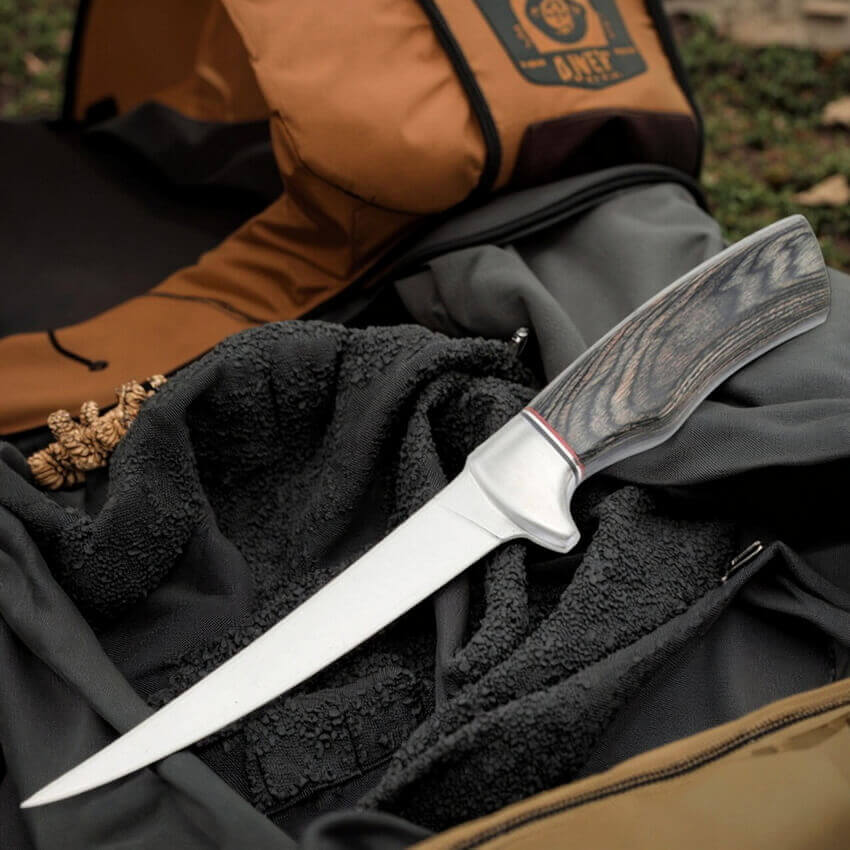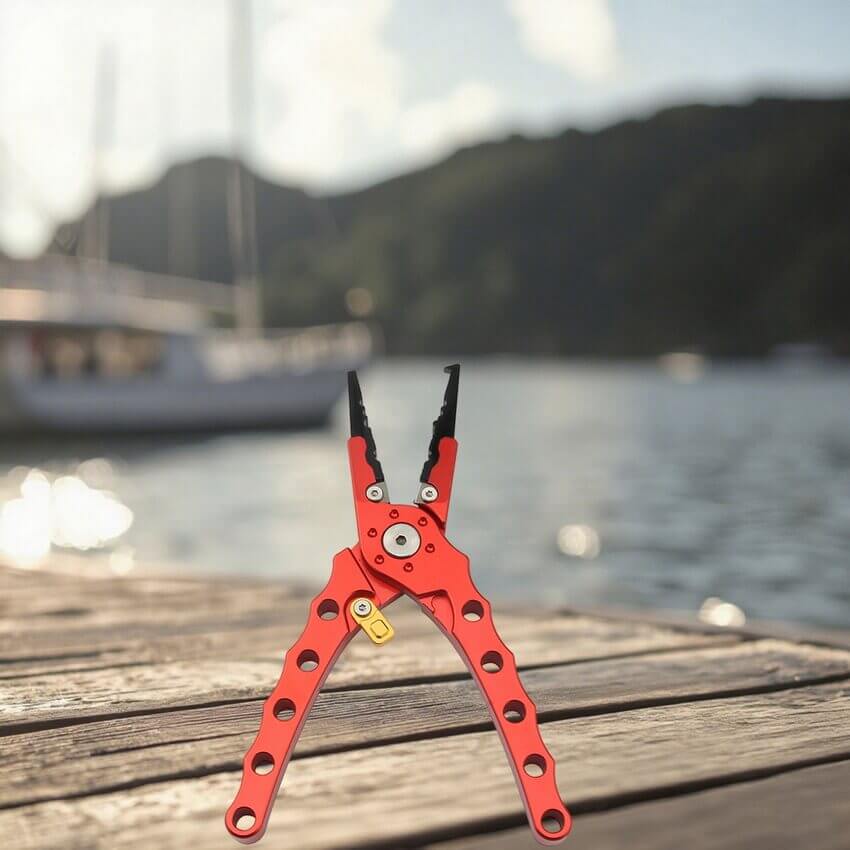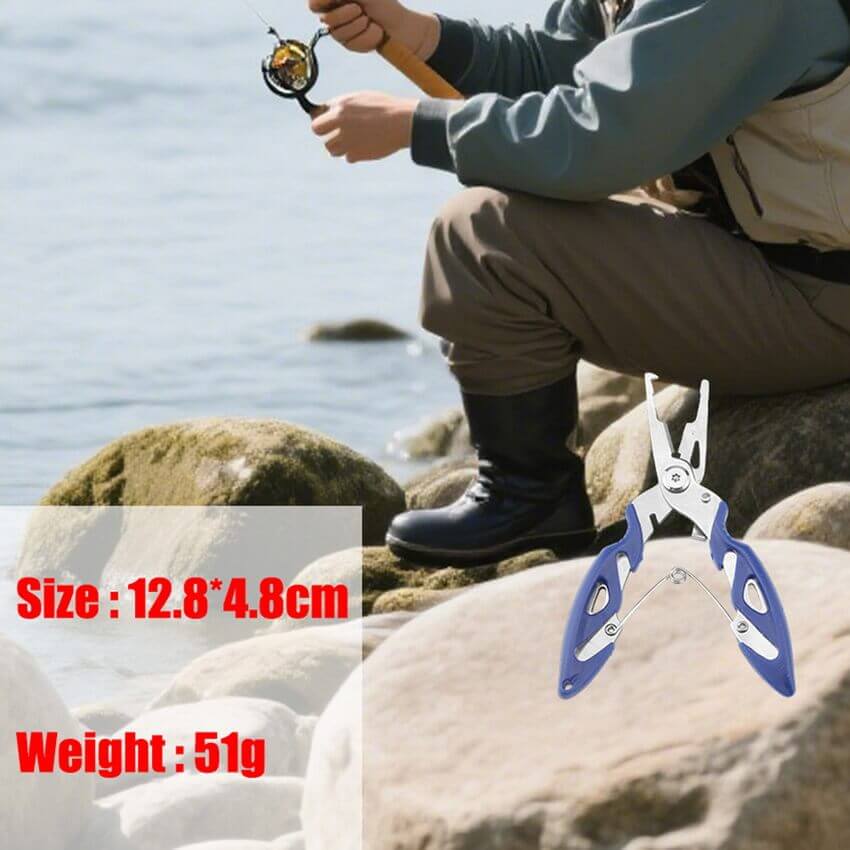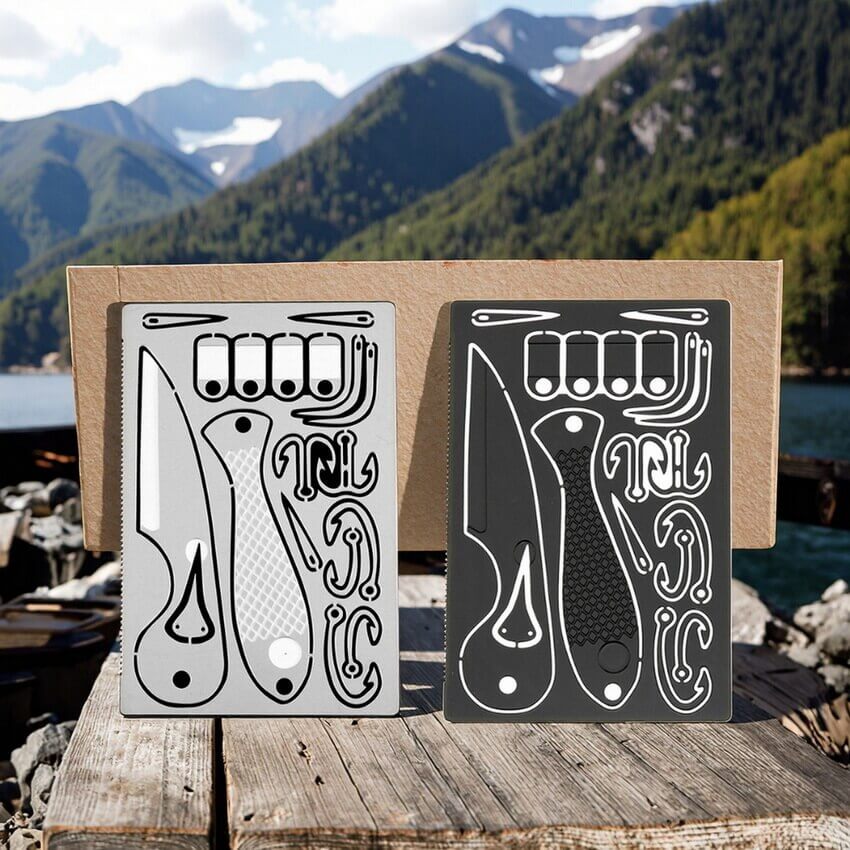![]() Windy
Windy
 WeChat
WeChat
 WhatsApp
WhatsApp
Click:262 seen
Fish Knife
Blade material: Preferentially choose stainless steel materials, such as 5Cr15MoV stainless steel, which has good corrosion resistance and is not prone to rust, and can maintain sharpness for a long time. High-carbon stainless steel materials are even harder and can maintain sharpness for a longer period, but attention should be paid to maintenance to avoid rust.
Blade shape: Choose a blade length of 15-25 centimeters, which is relatively suitable for operation. The slender design of the knife body is convenient for cutting into the fish body, such as a thin and sharp blade, the front end is suitable for piercing, and the thin blade can easily penetrate the fish belly and cut the fish meat into thin slices.
Handle design: Choose a comfortable and anti-slip handle, such as a rubber or plastic handle, which can provide good grip and prevent the knife from slipping off during the fish cutting process due to the slippery fish body.
Folding and portability: If you often go fishing, you can choose a folding fish knife, which is convenient to carry and does not take up space.

Fish Clamp
Material: Commonly used materials include stainless steel, titanium alloy, etc. Stainless steel materials are sturdy and durable, do not rust easily, and are relatively affordable; titanium alloy materials are lighter, more corrosion-resistant, and have high strength, but the price is usually higher.
Function: Choose a fish clamp with corresponding functions according to fishing needs. For example, if you need to frequently cut fishing lines, choose a fish clamp with a cutting function; if you need to handle fish hooks with barbs, a fish clamp with a detaching function will be more practical.
Claw design: Fish clamps with serrated or textured claws can better grip the fish body and prevent it from slipping. The pointed-mouth clamp is suitable for handling small fish or for fine operations, while the curved-mouth clamp is more stable when controlling large fish.
Size: Small fish clamps are convenient to carry and operate, suitable for catching small fish or for fine work; large fish clamps have greater strength and can better control large fish, but carrying may not be convenient, and you can choose based on the size of the fish you often catch.

Fish Scissors
Material: Similar to fish clamps, fish scissors usually also use stainless steel materials to ensure rust resistance and durability. Some high-end fish scissors may use special materials such as titanium alloy, which can further reduce weight while ensuring performance.
Scissor shape: Circular scissor shapes are suitable for cutting thinner fishing lines, while V-shaped scissor shapes are more suitable for cutting thicker fishing lines. If you often need to trim lead tape, choose a fish scissors with a thinner and sharper scissor shape, which can more easily cut through the lead tape.
Portability: Considering the convenience of outdoor fishing, you can choose a small and lightweight fish scissors with folding function, which can be easily placed in the fishing bag or pocket for carrying.

Multi-Functional Tool Card
Function diversity: Choose a card that combines multiple practical tool functions, such as a tool card that includes can openers, adjustable wrenches, serrated edges, positioning wrenches, rulers, bottle openers, screwdrivers, side knives, etc., which can handle more situations during fishing.
Material: Generally made of stainless steel, with good strength and corrosion resistance, and not prone to damage or rust.
Portability: As a portable tool, choose a lightweight and compact multi-functional tool card that can be easily placed in a wallet or hung on a key ring, making it convenient to take out at any time.

